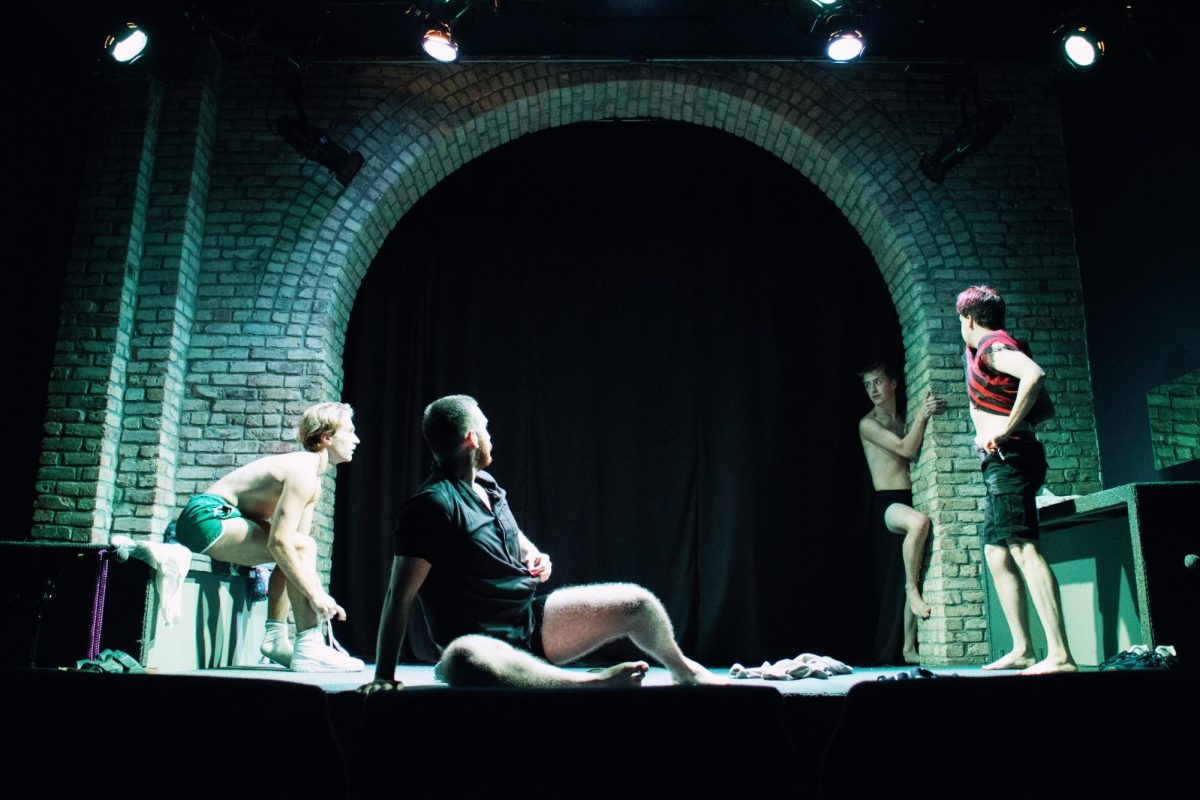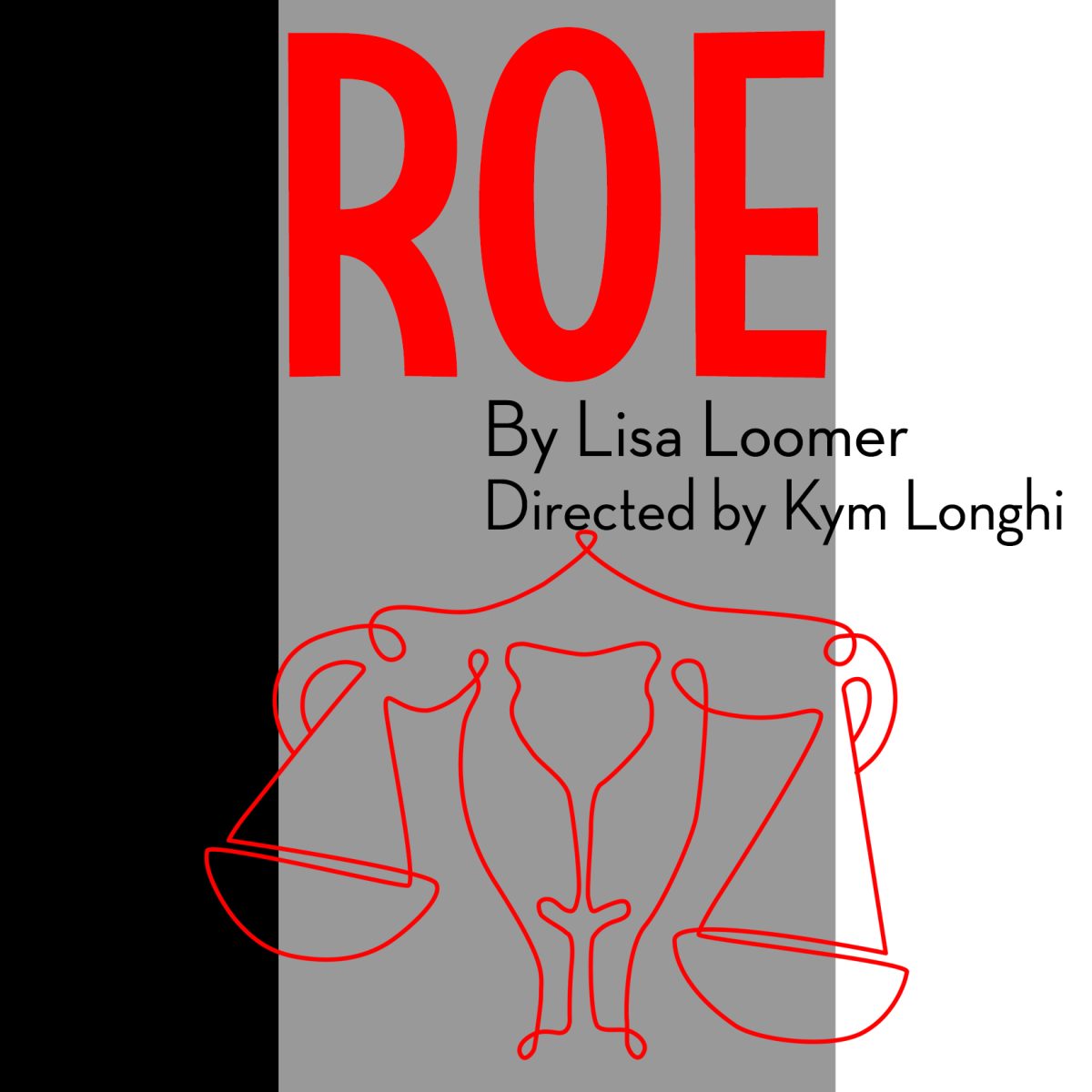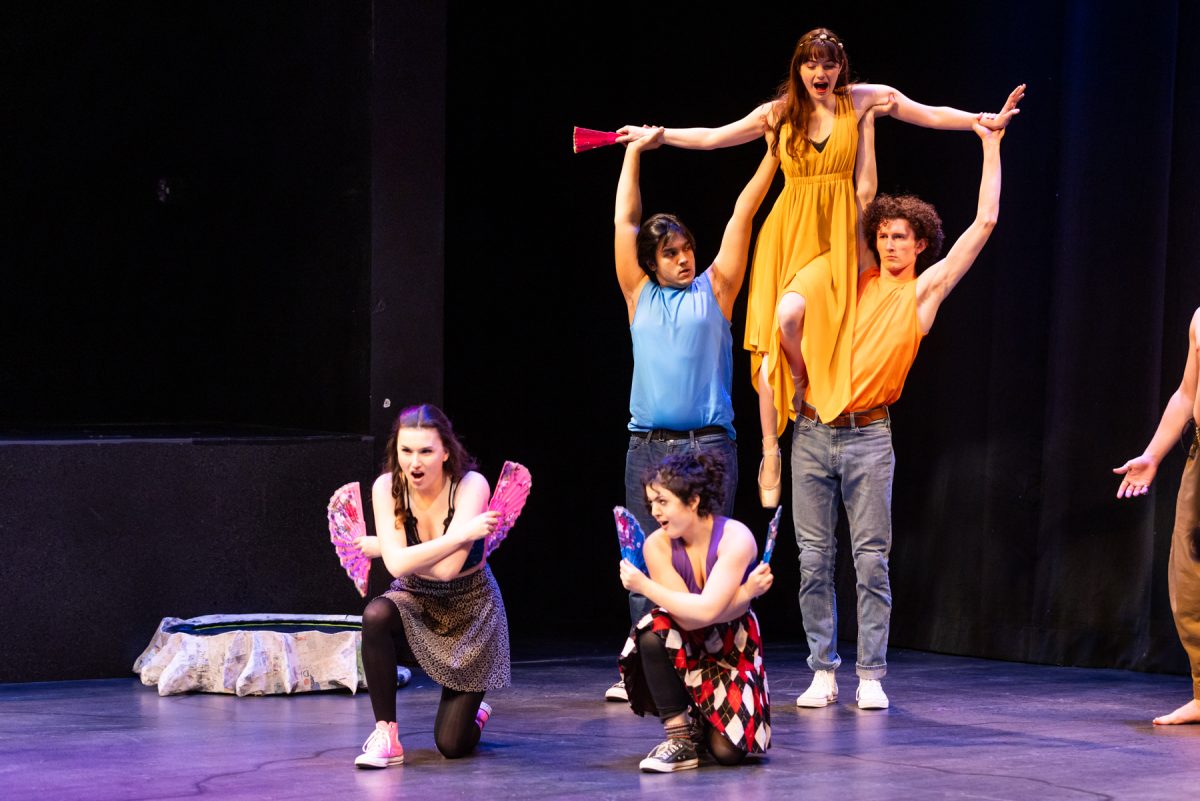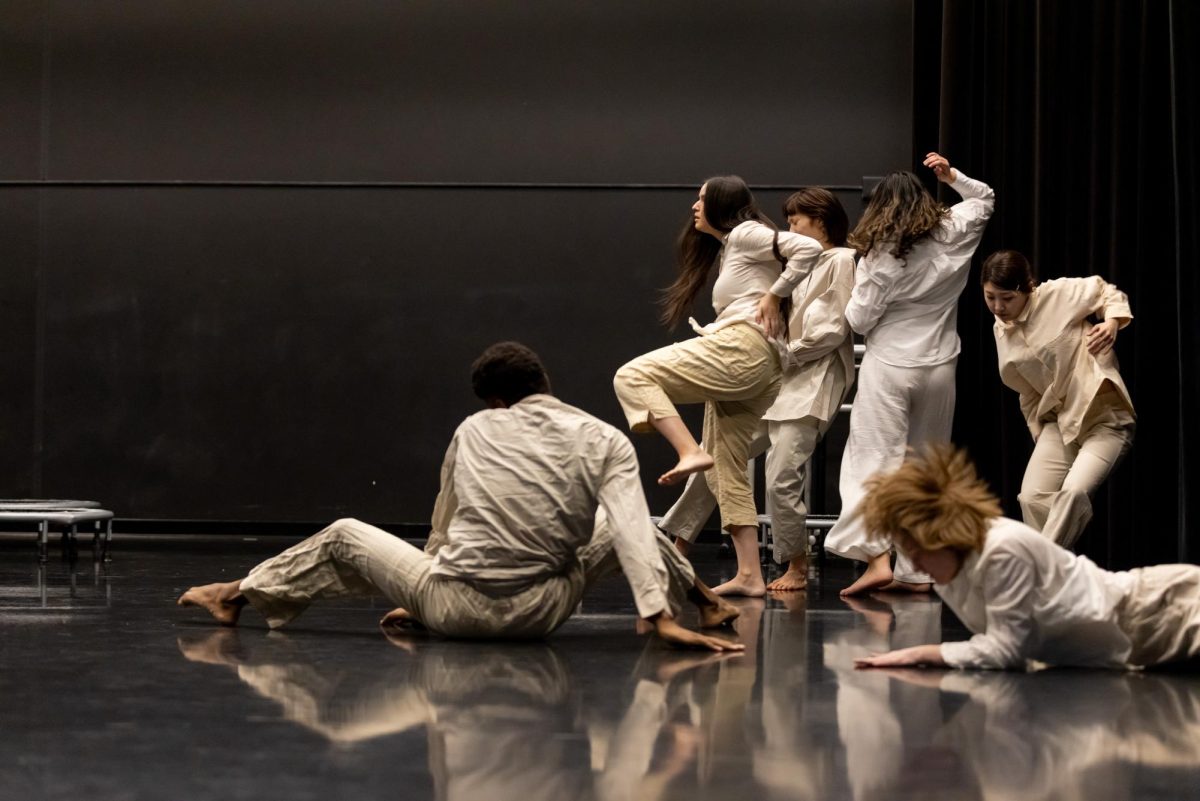A painting hangs plumb and square on the wall in the first scene of “Far Away,” now onstage at the Pillsbury House Theatre.
In the picture a rocking chair in afternoon sunlight rests on a lazy front porch, a sign of carefree abandonment. This same painting in the third and final scene, however, will hangs crooked.
Where there is a crooked painting, the audience can be frightfully sure there are dark trappings of another world roiling beneath the kitchen linoleum.
Caryl Churchill’s play “Far Away” weighs in at a slim one hour with just three scenes. Despite its brevity, “Far Away” manages to upend the natural world of order, complacency and singsong afternoons, to reveal an abyss where violence and the unknown convene.
The play starts mildly with a domestic scene at a country house. A rocking chair, a knitted quilt and a tea set adorn the stage.
Joan (Sage Coy), a young girl in a pink nightgown, walks in to tell her aunt Harper (Laura Esping) that she cannot sleep.
Young Joan is away from home and Harper explains to her that it is the odd place, new bed and coldness that contribute to the girl’s restlessness.
Into this booby trap stumbles the innocent and unsuspecting audience, taking what it sees at face value.
But Harper’s explanations are only a temporary relief. She cannot discourage the line of questioning young Joan pursues.
When Joan naively reveals the blood, the screams and the violence that she witnessed her uncle commit out in the shed, Harper’s explanations do little to console the audience, now in over its head.
All of this is executed with the utmost care using Churchill’s tightly wound, but open-ended dialogue.
Although the context of the dastardly events remains ambiguous, the audience knows that this is not going to be a happy play after all.
As the scene ends, a military drum roll ushers in the set change for the next one.
The switch is done in dim lighting and is visible for the whole audience. This shape shifting is not the most enjoyable thing to watch, especially since it takes a good deal of time.
Yet set designer Ron Albert and director Noel Raymond have just as many tricks up their sleeves as Churchill. They understand how a transition and set change can add to the play instead of detracting from it.
And so the set folds in upon itself like a piece of origami and then opens to reveal new and unsuspected dimensions.
With this new scene come the sounds of steam-powered machinery and factory life.
Todd (Matt Guidry) and a now older Joan (Sandra Struthers) are working at benches in a drab tiled room making loud and gaudy hats for some kind of parade.
With little effort, the two immerse themselves in cutesy dialogue and ogling. The audience, amidst these throes of young love, has to restrain itself from associating this scene with the hope and joy with which such images are usually invested.
But since this is a Churchill play, some vague, looming entity, in this case industry, must terrorize the idealistic scene, lurking on the margins to incite awkward dialogue.
“There’s still the journalist. If he looks into it a bit more we could expose the corrupt financial basis of how the whole hat industry is run, not just this place, I’ll bet the whole industry is dodgy,” says Joan.
But the corruption, never fully explained, remains indefinite. Instead of context, the audience receives a harrowing scene.
A parade of prisoners, bound at the wrist and sporting the hats Joan and Todd made, get jeers and applause for their headgear before execution.
So what does all this violence and corruption swaddling innocence signify?
Churchill’s dialogue, by its sheer ambiguity, acts as a big umbrella. At first the audience may find shelter from the storm with safe images and cozy ideas, but the safest places aren’t what we expect.
And so “Far Away” is nothing but a hoax, though a skillfully crafted one. It plays the audience’s expectations against a “terror” scare that is all too recognizable today.
In the final scene, definitions of what constitutes the enemy rub off on the natural world. Elephants side with the Dutch. Mallards commit rape. The ants form alliances with the Moroccans.
“Far Away” feels like a prelude to something darker more refined and better worked out. But as it stands, it manages to do what larger works can’t – infuse the audience’s imagination with an unexplainable tension and let it grow into a horrible and strange familiarity.
















